Sion Sono’s “Whispering Star”—The Return to Present: A Brief Visit to Dystopia
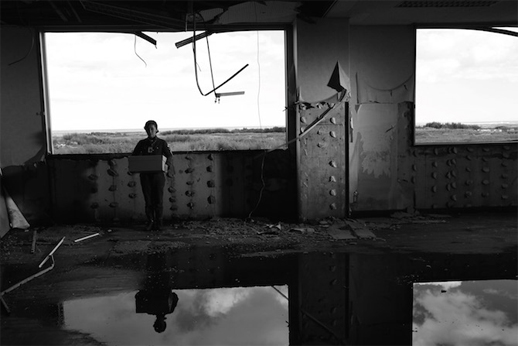
In their little-known single “Fare Thee Not Well Mutineer” the rock band Grandaddy sing of a ghastly post-apocalyptic future. The dystopian song also tells us reveries of living again in a healthy planet, long-ago obliterated by utopian human progress. In that distant future, amidst the high-rise carcasses and deadened malls there is nothing else to do but to helplessly daydream of another place to live peacefully, however, impossible ideal.
The feeling of despair, weariness, and longing portrayed in that song resonates with Sion Sono’s recent films, “Himizu” and “The Land of Hope”. This time around, however, the infamous poet and radical filmmaker of contemporary Japan, has traversed time and space in order to deliver terrible News to humankind from an unknown future. This message is encapsulated in his recent solo exhibition titled “The Whispering Star”, featured by the controversial art group Chim↑Pom for the debut of Garter–an artist-run-space located in the old Koenji neighborhood, which continues to fight back the threat of gentrification.
The solo exhibition is formulated around three main facets, representing the works “Tokyo Gagaga”, “Hachiko Project”, and “Whispering Star”, incorporating resemblances of architecture, video installation, film, and performance art. Each work is possessed of its own unique context in time, while yet seamlessly connecting like a narrative film.
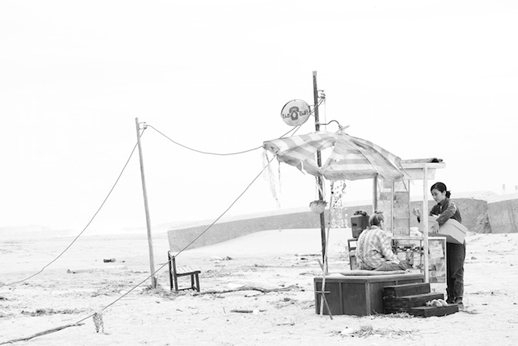
One of the three works is a video installation taken from his latest feature film, “Whispering Star” that is scheduled to hit local theaters next year. The installation displays fragments of this film across multiple screens, telling us, in whispers, the story of a future gone wrong. Shot in different locations across the evacuated zone of an irradiated Fukushima, Sono profoundly frames the decaying world of time to come, and embodies it in a site-specific composition reminiscent Andrei Tarkovsky’s sci-fi classic “Stalker” (1979).
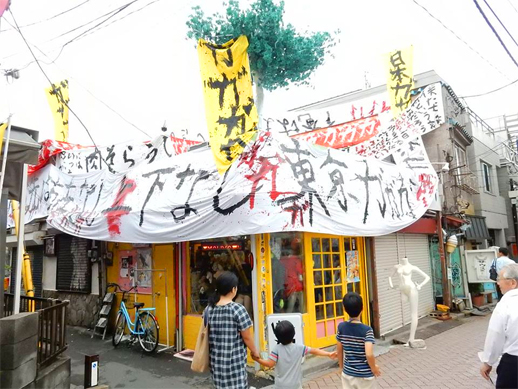
Tarkovsky’s film anticipated unimaginable nuclear disaster (as witnessed in Chernobyl and Fukushima) by portraying the apocalyptic future already present in the nuclear forces of the day, metaphorically depicted in the film as the Zone of Alienation. Sono’s performance group “Tokyo Gagaga” (1993) understood precisely the meditations of Tarkovsky’s “zone”, which, Sono believed, was already contagious in the daily life of Japan’s post-bubble economy in the early nineties. Armed only with creativity and audacity, Sono’s notorious performance group waged a two-year war against normalization of alienated daily life by occupying and hijacking the densely populated streets of Tokyo, much to the surprise of the regulating authorities. With the question of “public space” currently enjoying much renewed interest, Sono’s daring actions have been unearthed from his archive of video footage, and has been repurposed here along with the endless fabric of protest banners to form an architectural piece mummifying the dilapidated building that houses the exhibition space. This second part of his work clearly expresses cynicism towards the illusion of industrial progress and development that was once the ideology of the early 20th century utopian avant-garde.
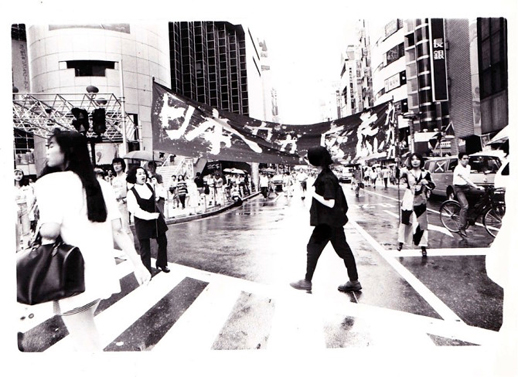
In the future when all is gone and nothing is left but the mummified debris of modern life, our common impulse is to return in the beginning—of going back. The third part of Sono’s work, “Hachiko Project”, speaks to us of this nostalgic longing for return.
Hachiko, the famed statue outside Shibuya Station of a dog who waits dutifully for his master who never returns, is also popularly known as a meeting spot. By reproducing exact copies of the iconic statue and distributing them across the deserted zones of Fukushima, stricken by nuclear disaster, Sono hopes dramatically for the impossible return of a once simple and lively prefecture in the northeast.
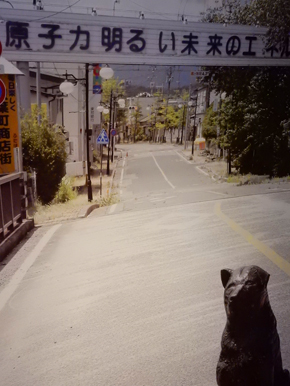
This longing for return may also be interpreted through the philosophical concept of Nietszche’s “Amor Fati”, a love of fate, and Schopenhauer’s “Eternal Recurrence”, holding up a cyclical repetition of time in which we must, in death, return to the same dysfunctional bodies that we discard in the pursuit of the ideal (endless material wealth) and the abstract (money). Given this impossibility of idealized form of return, Sion Sono in his solo exhibition is after all not about reincarnation of paradise lost. Instead, he wants us to take a closer look in our present reality, or, as Nietszche poignantly said in Ecce Homo, “My formula for greatness in a human being is amor fati: that one wants nothing to be different, not forward, not backward, not in all eternity. Not merely bear what is necessary, still less conceal it—all idealism is mendacity in the face of what is necessary—but love it.”
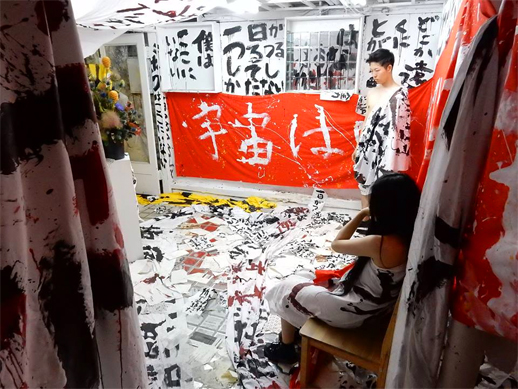
Sion Sono’s “Whispering Star” can be viewed through to July 26, 2015 at Garter artist-run-space in Koenji, Tokyo from 3pm to 8pm .
Jong Pairez
Jong Pairez



